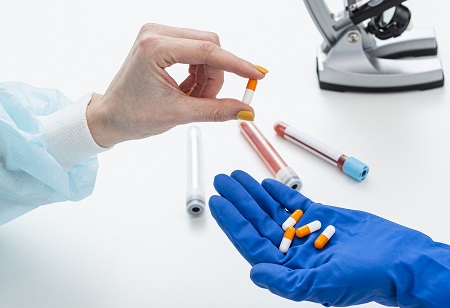Darshan.K, Correspondent, India Pharma Outlook Team

Cerivastatin was a drug for lowering cholesterol levels, which the FDA approved. Later, it was withdrawn from the markets due to reports of rhabdomyolysis, a dangerous condition where the muscle tissues break down. This was not seen in clinical trials. This only became apparent as patients used the drug when it came onto the market.
Post-marketing surveillance showed 52 people died from taking this drug, which resulted in fatal rhabdomyolysis and its resultant kidney failure. The one key takeaway from this episode was changing the way how clinical trials were carried out. Controlled clinical trials have too many flaws which cannot be ignored. To counteract the flaws they presented, which was a small sample set with little to no heterogeneity, real-world evidence trials served as a suitable counter to this. This testing method was more encompassing of real-life situations that fell outside the controlled clinical trials’ scope, allowing for a comprehensive view of a drug’s development. Researchers from big pharma are increasingly opting for this method over RCT due to a lot of factors, of which the major ones are listed below.
Real-world evidence (RWE) allows for the inclusion of a wide spectrum of patients, indicative of real-world clinical settings. This diversity has enhanced the understanding of how drugs perform across various demographics and clinical subgroups, providing insights that might not be noticeable in the controlled environment of clinical trials.
Novartis has strategically implemented RWE for the assessment of their “Entresto” drug, a heart failure medication. They leveraged data from its performance in the real world from a diverse set of patient populations. Analysis of data from various sources has allowed them to derive insights into the performance of their drugs, thereby contributing to a more nuanced understanding of drug efficacy and safety.
It’s a fact that controlled clinical trials are limited by the time constraints imposed upon them by authorized parties. This flaw prevents the drug developer from testing out the long-term efficacy and safety of the drug. RWE enables unbroken monitoring beyond the confines of the testing area, offering valuable insights into the real-world impact of a drug over an extended duration.
"In the realm of R&D, pharmaceutical companies are utilizing technology and fostering collaborations to introduce new therapies for emerging health challenges,” Priyanka Singh, Director, Taj Pharma.
Pfizer utilized real-world evidence to understand the comparative effectiveness of Xeljanz in real-world treatment scenarios. This involved analyzing data to assess how Xeljanz performed relative to other treatments, providing valuable insights for optimizing treatment strategies.
As the duration of drug performance observation is extended, its effectiveness is compared with other treatments, shedding light on its impact in real-world settings. This is invaluable information for medical experts seeking to optimize treatment based on real-world outputs rather than theoretical efficiency. This has empowered physicians to tailor interventions based on stronger data, thus enhancing the quality of care given to patients.
"When a hospital is patient-centric and technologically advanced talents are available, and a transparent, ethical system is in place, there will be a better flow of patients and sustainability will not be a question," Dr. Sivakumaran Janakiraman, COO, Kovai Medical Center & Hospital.
AstraZeneca has utilized RWE to complement clinical trial data for Tagrisso, a targeted therapy for non-small cell lung cancer, gaining insights into its real-world effectiveness and safety across diverse patient populations.
This is the vital factor that sets RWE apart from other clinical trial methods. Post-marketing surveillance plays a pivotal role once the drugs are released to the market. This surveillance helps identify and assess safety signals, enabling regulatory actions and ensuring patient safety.
Roche addressed challenges associated with data quality and standardization by cooperating with stakeholders. This involved them working on establishing standardized protocols for collecting and analyzing RWE for Herceptin, a breast cancer therapy. By directly comparing treatments in real-world scenarios, medical experts can make more informed choices, optimize patient outcomes, and contribute to the ongoing evolution of treatment strategies.
"Patient-centricity, in simple terms, means that the doctor must not lose sight of the patient after providing them with the initial care. At least the healthcare provider or the hospital that the doctor is associated with must stay in constant contact with the patient and keep track of their recovery," Rajinish Menon, Founder & CEO, Sukino Healthcare.
The implementation of RWE has manifested itself as a transformative force, reshaping traditional practices and offering unexpected yet positive insights. Through examples set by numerous industry players, the profound impact this testing method has on modern drug development is immense. The medical experts have been a major beneficiary of RWE, the detailed understanding they receive from these tests across diverse samples and scenarios only further exemplifies the limitations of traditional clinical trials.